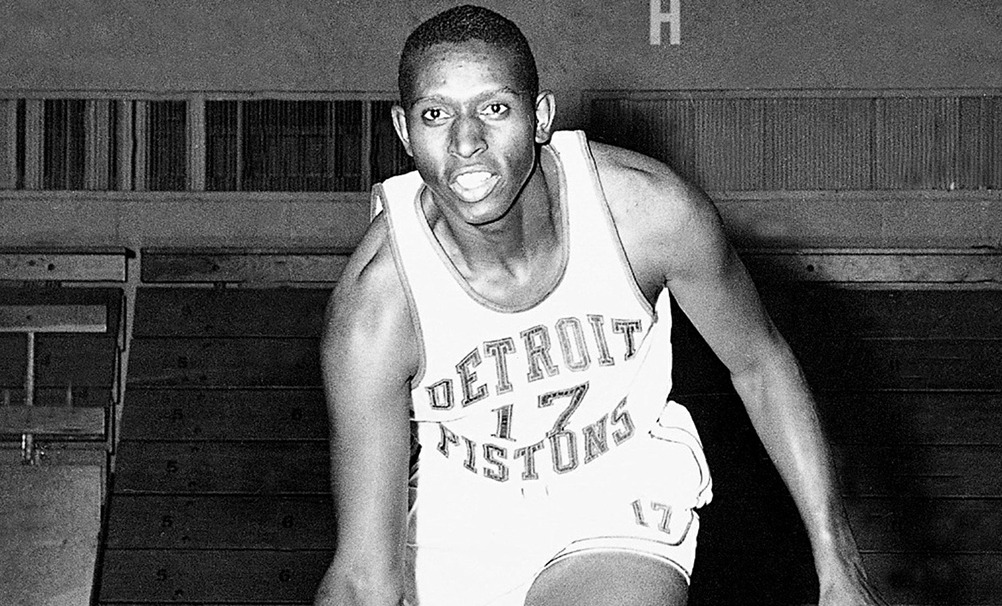
African-Americans have a rich history in sports, from Jesse Owens winning gold medals in the 1936 Summer Olympics to Jackie Robinson breaking the color barrier in Major League Baseball. With the formation of the Basketball Association of America (BAA) in 1946, the National Basketball Association (NBA) was born. But who was the first African-American to play in the NBA? In this article, we will explore the history of the first African-American basketball players to enter the league and examine the impact they had on the NBA and our society.
Who were the first African-American basketball players in the NBA?
In this section, will explore the three men who were the first African-American players to enter the NBA. We will take a look at each of their stories and examine the impact they had on the league and the world.
Chuck Cooper
Chuck Cooper was the first African-American player to be drafted into the NBA. He was selected by the Boston Celtics in 1950, making him the first African-American to be drafted by an NBA team. Cooper attended Duquesne University and was a standout basketball player there, leading his team to two consecutive National Invitation Tournament (NIT) championships in 1949 and 1950.
After being drafted by the Celtics, he went on to have a successful career in the NBA, playing for seven seasons with four different teams. He averaged 8.4 points per game and 4.7 rebounds per game during his career and was named an All-Star in 1954.

Cooper’s impact on the league extended beyond his own performance on the court. His selection as the first African-American player to be drafted into the NBA broke down barriers and opened up opportunities for other players of color who followed him into the league. He paved the way for future generations of African-American players and helped make basketball a more inclusive sport.
Earl Lloyd
Earl Lloyd was also one of the first African-Americans in the NBA. He was selected by the Washington Capitals in 1950 and made his debut on October 31, 1950. Lloyd attended West Virginia State College and was a standout player there, leading his team to two consecutive CIAA championships in 1948 and 1949.
After being drafted by the Capitols, he went on to have a successful career in the NBA, playing for nine seasons with three different teams. He averaged 8.4 points per game and 6.4 rebounds per game during his playing career and was named an All-Star in 1956. He was also inducted into the Naismith Memorial Basketball Hall of Fame in 2003.

Lloyd’s impact on the league extended beyond his own performance on the court. His selection as the first African-American player to actually play in an NBA game broke down barriers and opened up opportunities for other players of color who followed him into the league. He paved the way for future generations of African-American players and helped make basketball a more inclusive sport.
Nat “Sweetwater” Clifton
Nat “Sweetwater” Clifton was the third African-American to enter the NBA. He was signed by the New York Knicks in 1950. Clifton attended Xavier University and was a standout basketball player there, leading his team to two consecutive NAIA championships in 1948 and 1949.
After being signed by the Knicks, he went on to have a successful career in the NBA, playing for nine seasons with three different teams. He averaged 10.7 points per game and 8.6 rebounds per game during his career and was named an All-Star in 1957.

Clifton’s impact on the league extended beyond his own performance on the court. His selection as the first African-American player to be signed into the NBA broke down barriers and opened up opportunities for other players of color who followed him into the league. He paved the way for future generations of African-American players and helped make basketball a more inclusive sport.
Impact of the First African-American NBA Players
The first African-American players to enter the NBA broke down barriers and opened up opportunities for other players of color who followed them into the league. By entering the NBA, they helped make basketball a more inclusive sport and paved the way for future generations of African-American players. Their presence in the league also had a positive impact on society as a whole, as it showed that people of all races could come together and work towards a common goal.
The first African-American players to enter the NBA faced significant challenges due to racism and discrimination. Despite these obstacles, they persevered and made an indelible mark on the league and our society. They demonstrated courage and determination in the face of adversity, inspiring others to follow their lead. The legacy of these pioneers continues to this day, as their contributions have been instrumental in making basketball one of the most popular sports in the world.
Conclusion
The basketball history of the NBA cannot be complete without acknowledging the contributions of the first African-American players to break into the league. Chuck Cooper, Earl Lloyd and Nat “Sweetwater” Clifton paved the way for future generations in their pursuit of equality and opportunity on and off the court. These courageous men broke through barriers to create a more inclusive NBA where everyone could have an equal chance at success. Their legacy lives on today in both NBA history and our society as a whole.





